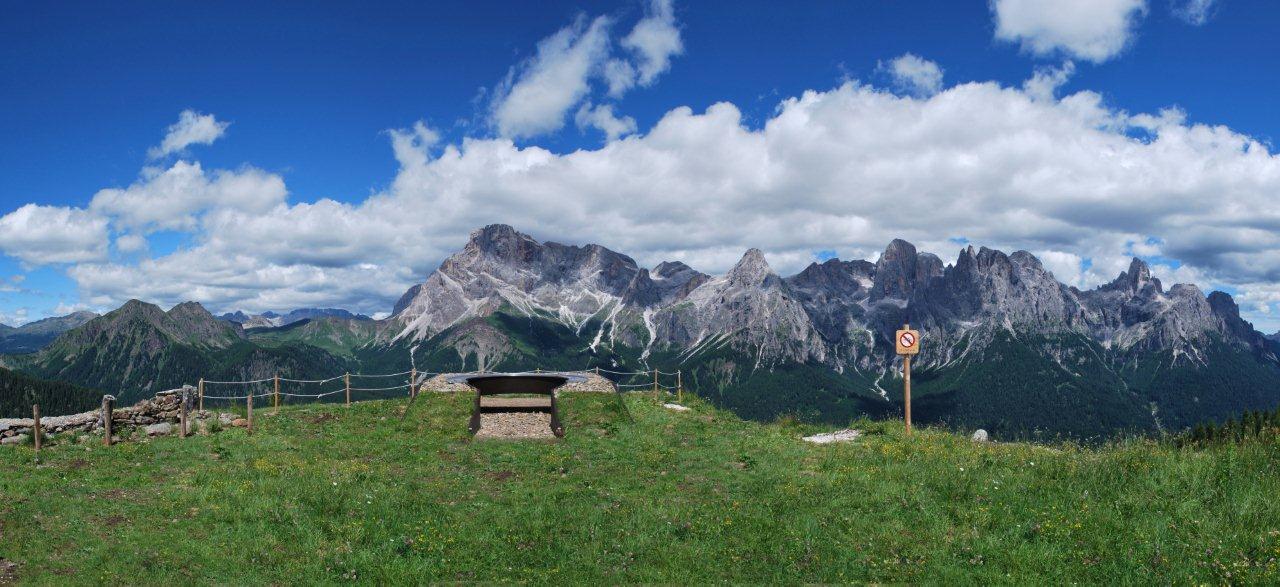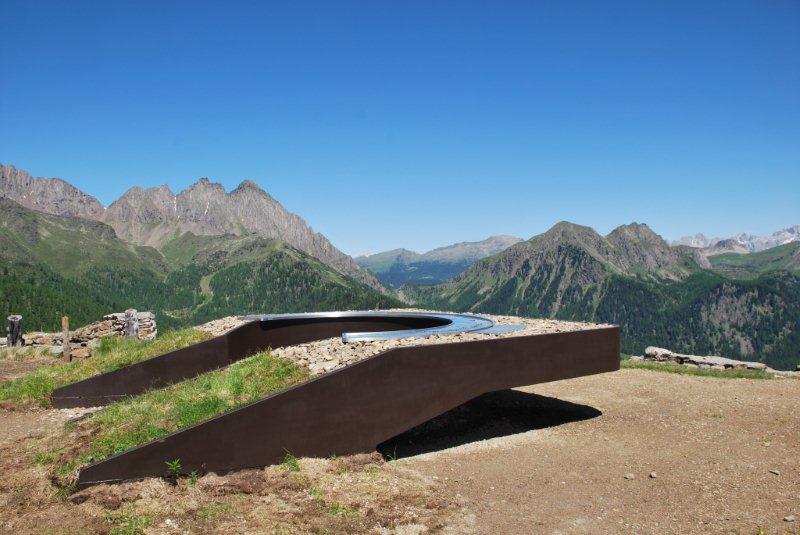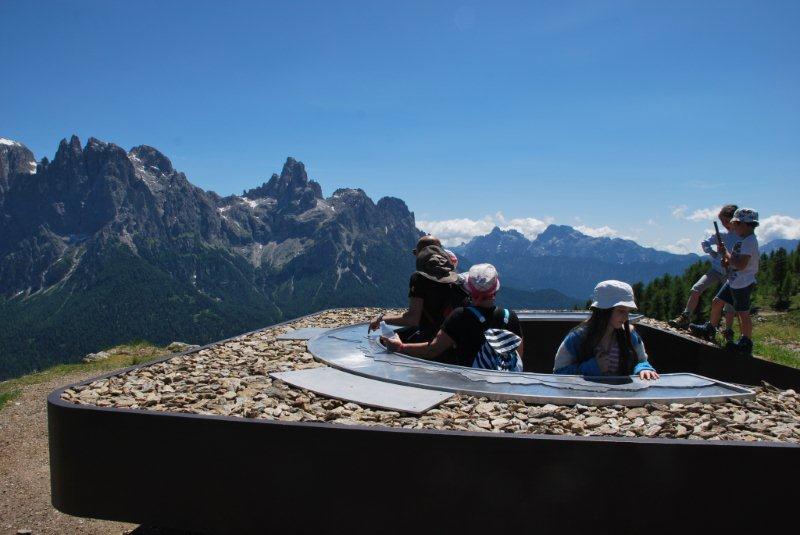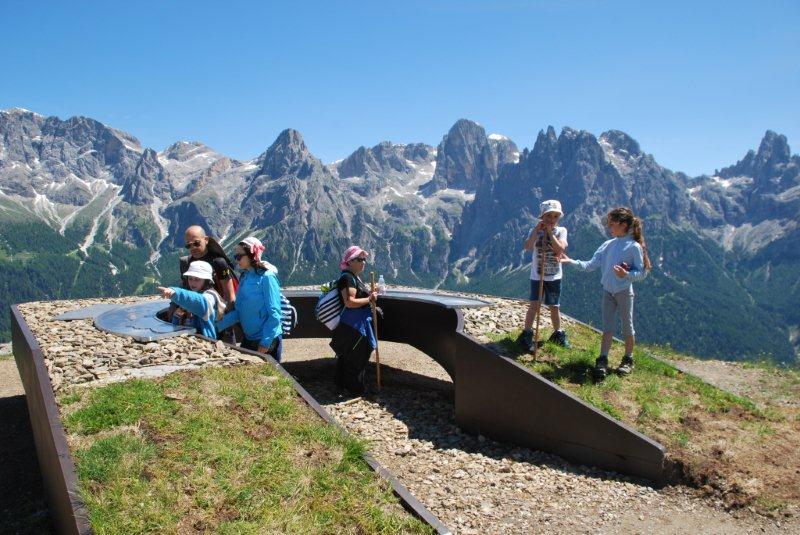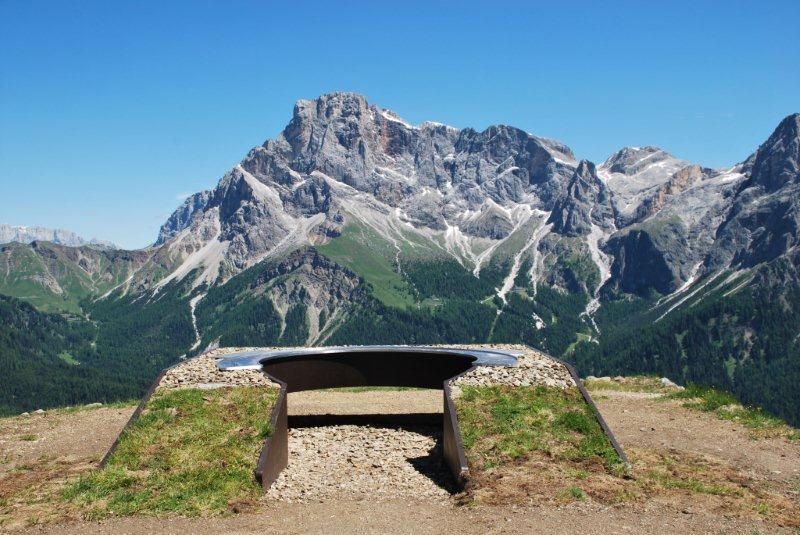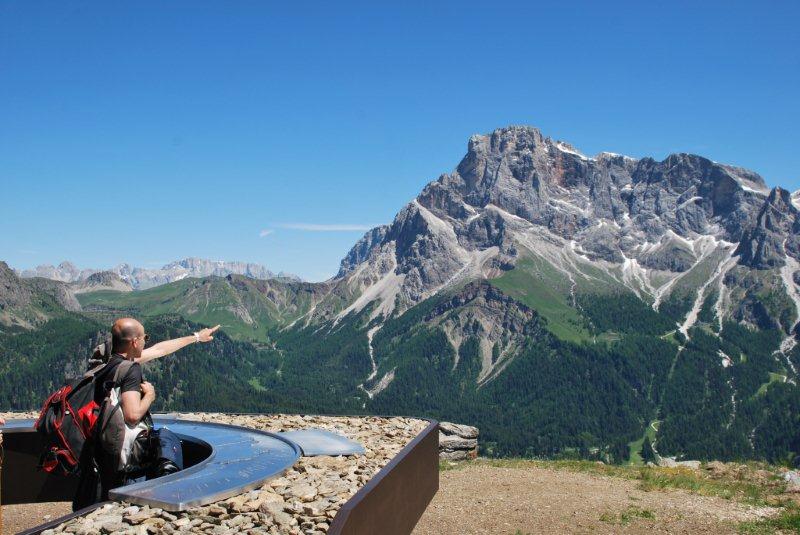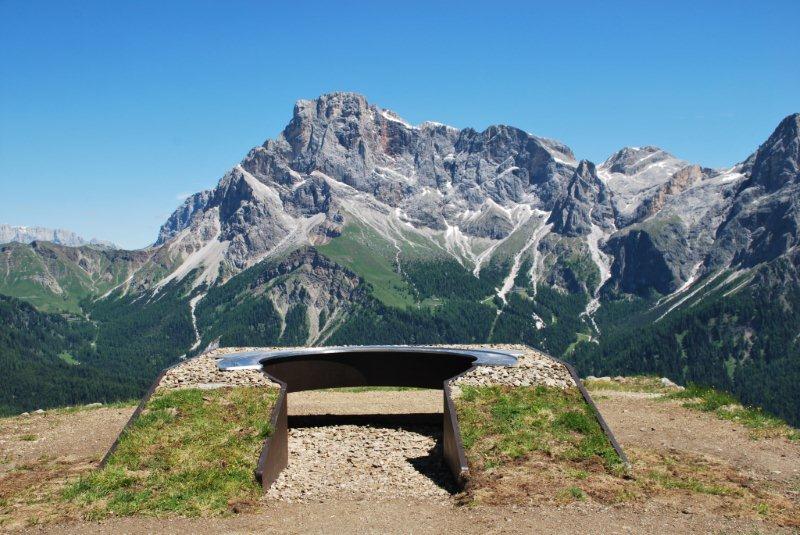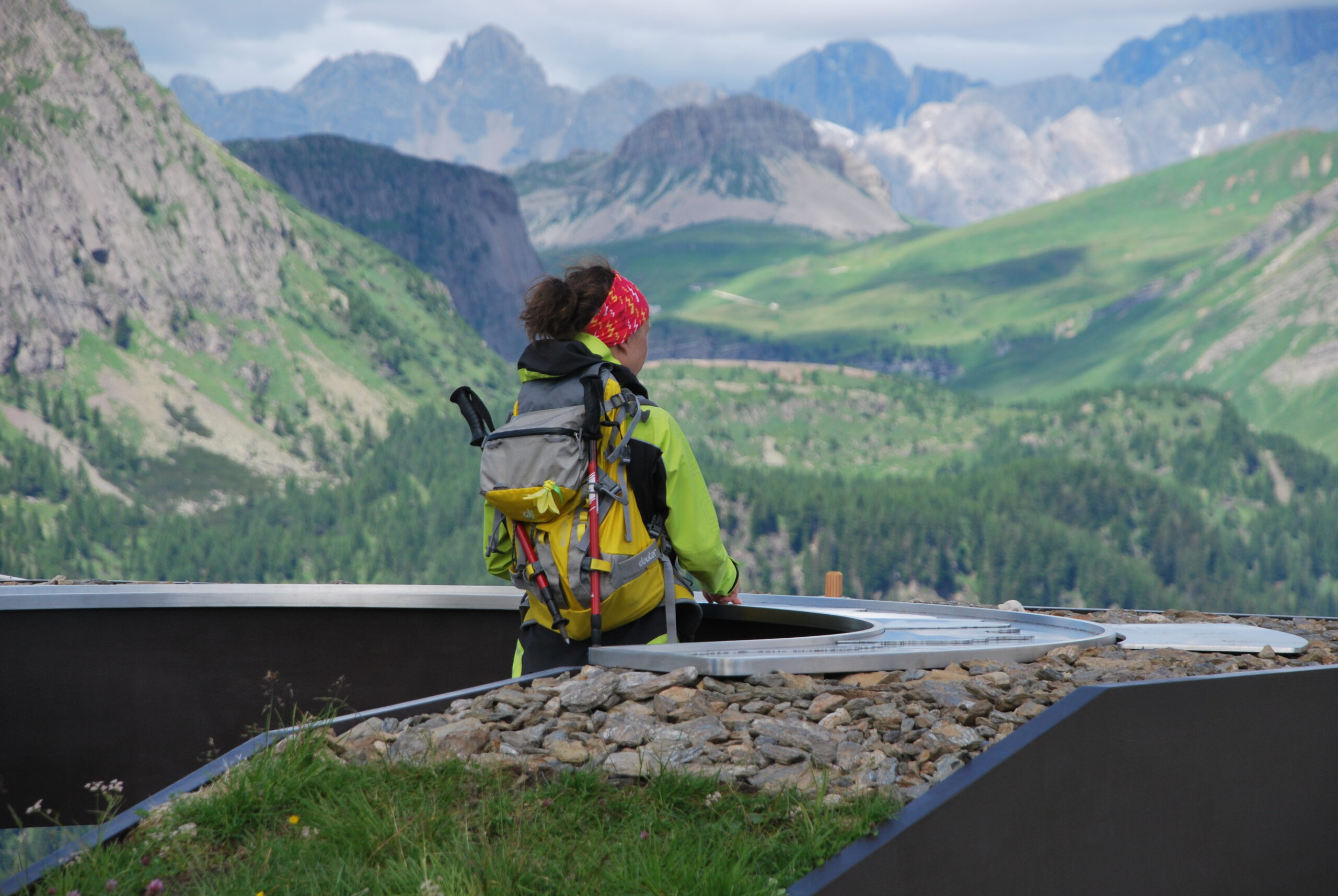The Panoramic Balcony over the Dolomites
The Balcony made on the Alpe Tognola in the Park of Paneveggio is part of the initiatives identified by the preliminary study for the realisation of information points of Natural Heritage in the hot spot areas of the Dolomites. After the one inaugurated on Mount Specie in the Park of Fanes-Senes-Braies, a new element has been added to a project that has the objective of promoting the knowledge and valorisation of
the UNESCO World Heritage territory. The view from the balcony, needless to say, is breathtaking, and spans from the porphyritic range of the Lagorai to the peaks of the Vette Feltrine, passing through the impressive group of Pale di San Martino.
How to get to the panoramic balcony
The site can be reached on foot, conveniently from above, from the arrival station of the Tognola cableway in approximately 15 minutes, or from below, by following the Panzer trail, that has recently been restored, in approximately. 1.5 hours starting from San Martino di Castrozza.
GEOLOGY and GEOMORPHOLOGY
Panel 1
BY OBSERVING THE LANDSCAPE you will immediately notice a variety of shapes and colours that make a clean break almost at the centre where, on the horizon in the background, emerges the line of the crests of the Marmolada. To the left of this break, the mountains are dark, to the right they are light: it is in fact the colour that reveals their different origin.
We start, from the left, with the search for the summit of Cima Tognola that, from this point of view, is the only evidence of the oldest rocks not only of the Park but also of the south-central Alps: those of the Subalpine Metamorphic Base. It derives from the transformation of the previous material; in the case of theTognola this is quartz phyllite, metamorphic rocks deriving from sediments such as clays or sandstones deposited 520-480 million years ago (Ma) and then metamorphosed from the high temperatures and pressures due to the Hercynian orogeny approximately in 350 Ma.
By shifting the gaze clockwise toward the succession of dark peaks of the Lagorai range until the Tognazza, instead we see the imposing ruins of a history of eruptions and volcanic explosions, lasting 8 Ma that, from the area of Trento and Bolzano, invaded this area in successive waves. It is what remains of the Atesina porphyritic Platform that had an extension of 2,000 square km and a thickness of up to 2 km.
Further to the right the colours radically change with the light grey; the unmistakable bastion of the Cimon della Pala opens the series of peaks of the dolomitic group of the Pale di San Martino constituted for the most part of the Schlern Dolomites. It is the result of the settlement of actual coral reefs that lived there between 235 and 230 million years ago.
Further to the east, instead, on a second plane, are the summits of the Piz de Mez, Piz de Sagron and of the Sas de Mura that are the evidence of areas in which the deposition of calcareous sludge and marine organisms continued still for a long time in the sea of the Tedide, forming other large and important Dolomitic complexes formed of Main Dolomite.
Panel 2
AT THE BASE OF THE CIMON DELLA PALA you can note a well-stratified formation with obvious folds: it is the Bellerophon Formation, constituted of gypsum repeatedly alternated with dolomites, limestones and marls the result of a low lagoon environment, almost a saline one, in a hot climate, which sometimes evaporated, leaving deposits of sheets of gypsum (calcium sulphate) and dolomite: it was a lengthy period started around 260 Ma, of repeated incursions of the coastline in a cyclic series of depositions and evaporations. The strong compressions caused by the collision between the African and the European plates buckled the thin and soft layers. Higher up we can observe dense reddish and grey-violet layers of the powerful and characteristic Werfen Formation; it too the result of a continuous succession of incursions and regressions of the coastline in that tropical sea where reddish clays and calcareous sands, with thin sheets of gypsum were deposited in 10 Ma in a subsidence plane. Above it you will note the white Serla Dolomite deriving from the sedimentation in the quieter areas and with less terrigenous intake, where living organisms could settle.
The texts of the panels are by Elena Luise and like the images, they have been extrapolated from the geological booklets published by the Park and on sale at the Visitor Centres and on the website of the Park.
Pubblicato il: 7 May 2019
Ultimo aggiornamento: 14 February 2023


